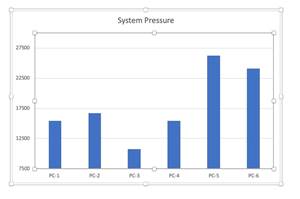Scared Straight on Molding Simulation
Molding simulation is such a vital technology today that many molders couldn’t imagine life without it. But as a “consumer” of such a service, you have to know how to carefully critique the simulation results, which can hide a multitude of shortcuts and compromises that threaten their utility.
“What can I trust when it comes to injection molding simulation?” That’s the title, slightly rephrased, of an eye-opening (and perhaps throat-gripping) presentation at our Molding 2021 Conference last month in Rosemont, Ill. It poses a vital question for molders in this era of “smart manufacturing.” And the answer, according to the speaker, Jennifer Schmidt, senior Moldflow instructor at the American Injection Molding (AIM) Institute in Erie, Pa., is, “It depends …”—on an awful lot of things.

Jennifer Schmidt of the AIM Institute warned that without a careful critique, simulation results may not be all they’re cracked up to be.
Schmidt took the real-life example of a simulation that was performed for a client by a service bureau. She painstakingly critiqued the simulation results report—ripped it to shreds, actually. She identified at least six tires to kick when evaluating such a report (something she has ample experience in), what questions to ask about each, what revealing symptoms to look for when—as in this case—direct answers to those questions are not provided in the report, and tips on best practices that should be used in any competent analysis.
Question 1: What software and version is being used? Is that software up to date? Although the report stated that a current software release was used, Schmidt pointed out some “tells” (as they say of poker players) that indicated otherwise.
Question 2: What type of mesh was used? Mid-plane, dual-domain or 3D? And not just for the part but for the runner as well (special mesh types are available for runners). Is the mesh type appropriate for the part geometry? Is it fine enough in critical areas to capture important details?
To answer those questions, you must make sure the report gives you access to a display of the mesh itself. “Why hide it?” Schmidt asked. And even without access to the mesh, she showed how the simulation results can reveal insights into the mesh quality—things like the filling animation, weld lines and sink marks.
If all that seems too deep in the weeds for you, Schmidt showed how simulations of the same part with the same material and same mesh density, but different mesh types for the part and runner, produced wildly different results for pressure at the fill-to-pack switchover point—ranging from as little as 10,000 psi to as much as 26,000 psi. That could make quite a difference in what happens in actual molding.
Question 3: What was the material data in the simulation based on? Was data on the actual material available, or was data on a substitute used—a resin of the same generic family but perhaps different molecular weight and flow characteristics, and perhaps without the same level of fillers, reinforcements or other additives used in the actual molding. And what was the level of material characterization? How much data was available? And how recently was that data generated? Might the formulation have changed since then? The bottom line is that an accurate molding prediction requires good material data. Without it, and it’s like you were test driving a different make and model before buying a car.
Question 4: What was modeled? What analysis sequences were run? In this case, the report provided warpage results, but none of the inputs to it. No data on time to freeze, volumetric shrinkage, cooling, etc. So how could you evaluate the credibility of the warpage prediction?
Question 5: What processing conditions were used—fill time, mold temp, melt temp, packing pressure, packing time, cooling? And how were those conditions determined? “Beware of default settings!” was Schmidt’s cautionary note.
Question 6: Who is the analyst? Are they certified? What is the level of experience or plastics background? And something else to give you pause: How often do they do simulations like this? “You can’t just do this once a month and keep up your skills,” warned Schmidt.
The highly suspect simulation report that Schmidt used as an example was full of soothing phrases like, “Flow pattern is uniform, no shortshot or hesitation, flow is balanced.” Don’t be fooled by bland clichés. You need someone like Schmidt to go over the report with a fine-toothed comb to ensure it is credible.
At the end of her talk, I thanked Schmidt for her thoroughly terrifying presentation. More like an autopsy. I don’t know if I would be more terrified if I were the customer or the analyst who did the report, knowing someone like her would give it such an uncompromising critique.
Don’t get me wrong: Molding simulation is undoubtedly one of the most important developments in plastics of the last 50 years. Used correctly, it is little less than miraculous. It has so changed the culture of injection molding that the enormous waste of time and expense in trial-and-error mold development is no longer tolerated. But, like any other tool, it must be used correctly. And Schmidt’s presentation is a valuable reminder that we can’t relax into complacency that we can let the computer do our thinking for us.
Related Content
50 Years...600 Issues...and Still Counting
Matt Naitove marks his first half-century in plastics reporting, with a few of his favorite headlines.
Read More50 Years of Headlines … Almost
I was lucky to get an early look at many of the past half-century’s exciting developments in plastics. Here’s a selection.
Read MoreTake Time to Save Time: Five Steps in Mold Design to Reduce Back-End Troubleshooting
Westminster Tool shares how the one week it typically takes to perform these five steps in the design phase can save three weeks or more in an overall tool build.
Read MoreHow to Achieve Simulation Success, Part 2: Material Characterization
Depending on whether or not your chosen material is in the simulation database — and sometimes even if it is — analysts will have some important choices to make and factors to be aware of. Learn them here.
Read MoreRead Next
Lead the Conversation, Change the Conversation
Coverage of single-use plastics can be both misleading and demoralizing. Here are 10 tips for changing the perception of the plastics industry at your company and in your community.
Read MoreUnderstanding Melting in Single-Screw Extruders
You can better visualize the melting process by “flipping” the observation point so that the barrel appears to be turning clockwise around a stationary screw.
Read MoreWhy (and What) You Need to Dry
Other than polyolefins, almost every other polymer exhibits some level of polarity and therefore can absorb a certain amount of moisture from the atmosphere. Here’s a look at some of these materials, and what needs to be done to dry them.
Read More










.png;maxWidth=300;quality=90)














